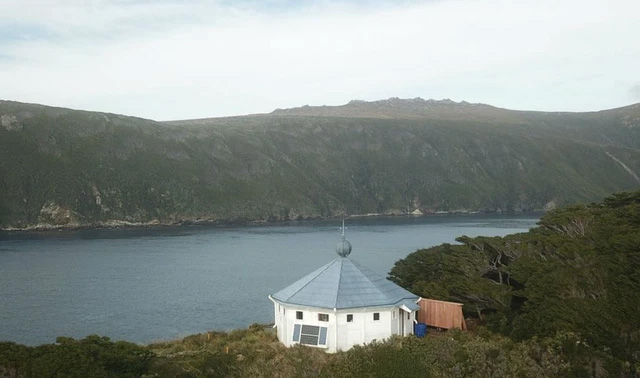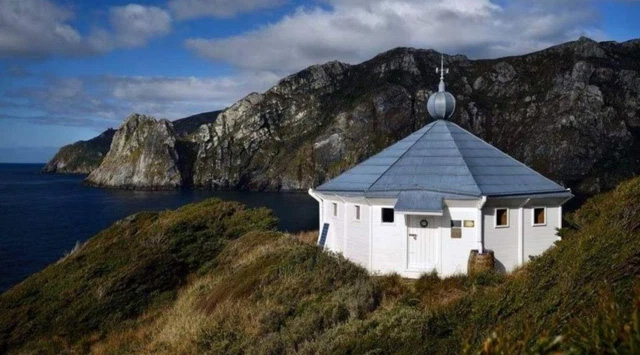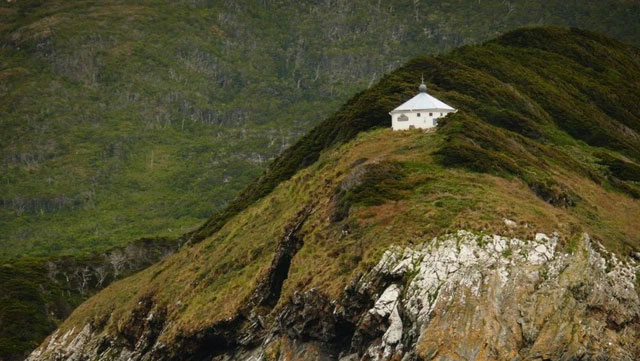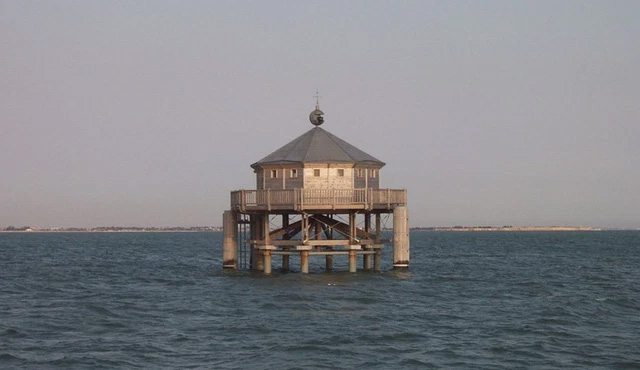The lighthouse has been standing since 1884 when the South Atlantic Expeditionary Division under the command of Commodore Augusto Lasserre arrived here. They established a district here with a prison and a rescue station on the island to assist those unfortunate enough to shipwreck around Cape Horn. The lighthouse was built on a rocky outcrop known as Cape San Juan.
It has been nicknamed “The Lighthouse at the End of the World”.

This is the oldest lighthouse in Argentina.
Commodore Augusto Lasserre added “de Salvamento” (meaning “of Rescue”) to the name of the lighthouse to clarify its purpose. From then on, the lighthouse was called San Juan de Salvamento. It is the oldest lighthouse in Argentina and the first to be built in the southern seas.
The original lighthouse was a 16-sided wooden structure, standing less than 5 meters tall with a diameter of about 9 meters. The light was produced by 8 fixed oil lamps placed behind several windows fitted with Fresnel lenses.

The original lighthouse was a 16-sided wooden house, less than 5 meters tall.
However, the location of the lighthouse did not provide the best visibility and illumination. Although it stood 60 meters high, the light from the oil lamps was too weak, and fog often obscured the lighthouse. As a result, many ships continued to wreck around New Year Island and many small islands north of the lighthouse.
Therefore, in 1901, the Argentine government, in coordination with the International Antarctic Exploration Committee, decided to build the New Year Lighthouse a bit further north on Observatory Island. The New Year Lighthouse was completed in 1902, and the Faro de San Juan de Salvamento was abandoned just eight years after it became operational.

The lighthouse was abandoned and in ruins for nearly a century.
Inspired by the remote location of the lighthouse, writer Jules Verne completed the first draft of his novel “The Lighthouse at the End of the World” in 1901. It was published four years later after the author’s death.
The lighthouse remained abandoned and in ruins for nearly a century until 1994, when French mariner André Bronner, captivated by Jules Verne’s novel, set out to find “the lighthouse at the end of the world.” Bronner returned to the island the following year and isolated himself there for three months, surviving with rudimentary means in Flinders Bay, at the western tip of the island.
He decided to undertake a project to rebuild the lighthouse. He received support from the governments of Tierra del Fuego and Ushuaia, the Argentine Navy, the French government, and several private companies that enthusiastically embraced the idea. The project also received financial contributions from the autonomous French cities of Nantes (the hometown of Jules Verne) and La Rochelle (the residence of André Bronner).

The lighthouse at the end of the world
A replica of the lighthouse was completed in 1998 and was first illuminated on February 26, 1998. The wooden building constructed in La Rochelle was dismantled and transported by ship to Ushuaia, then to the island for reconstruction.
In 2000, André Bronner promoted the construction of another replica of the original San Juan de Salvamento lighthouse offshore from La Rochelle, on the Atlantic coast of France. Also known as “The Lighthouse at the End of the World,” it was built underwater and on stilts.

















































